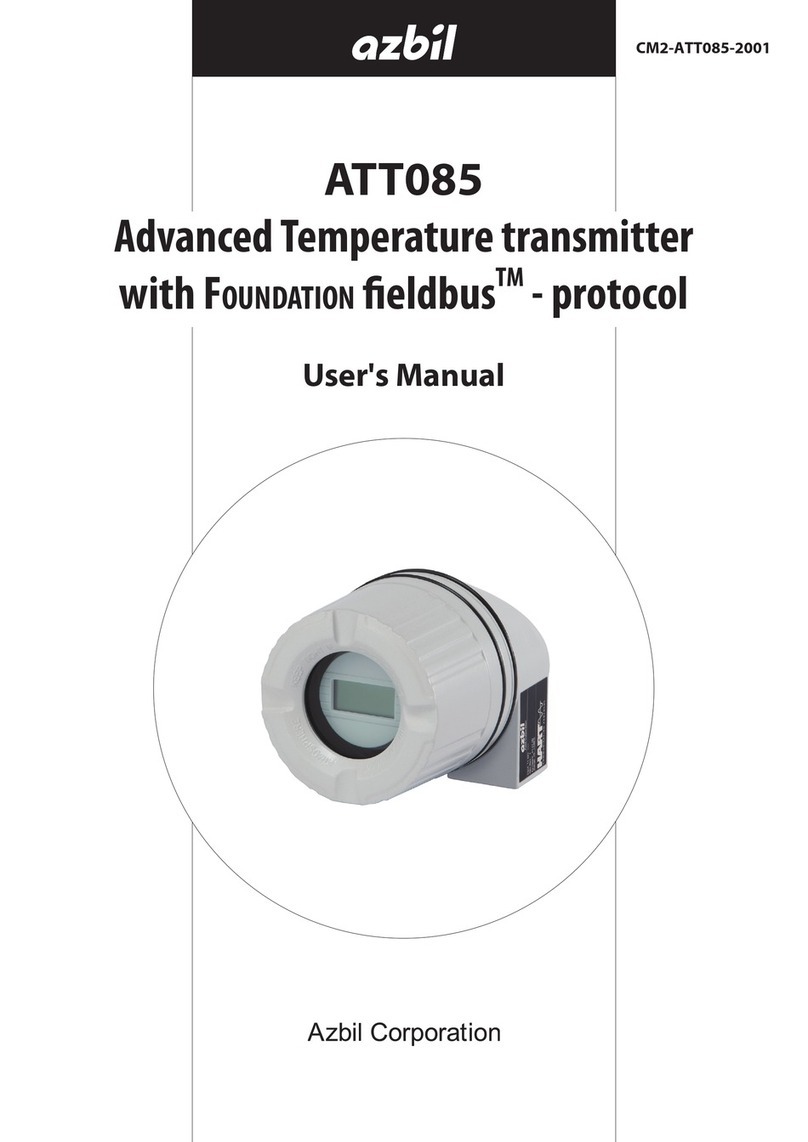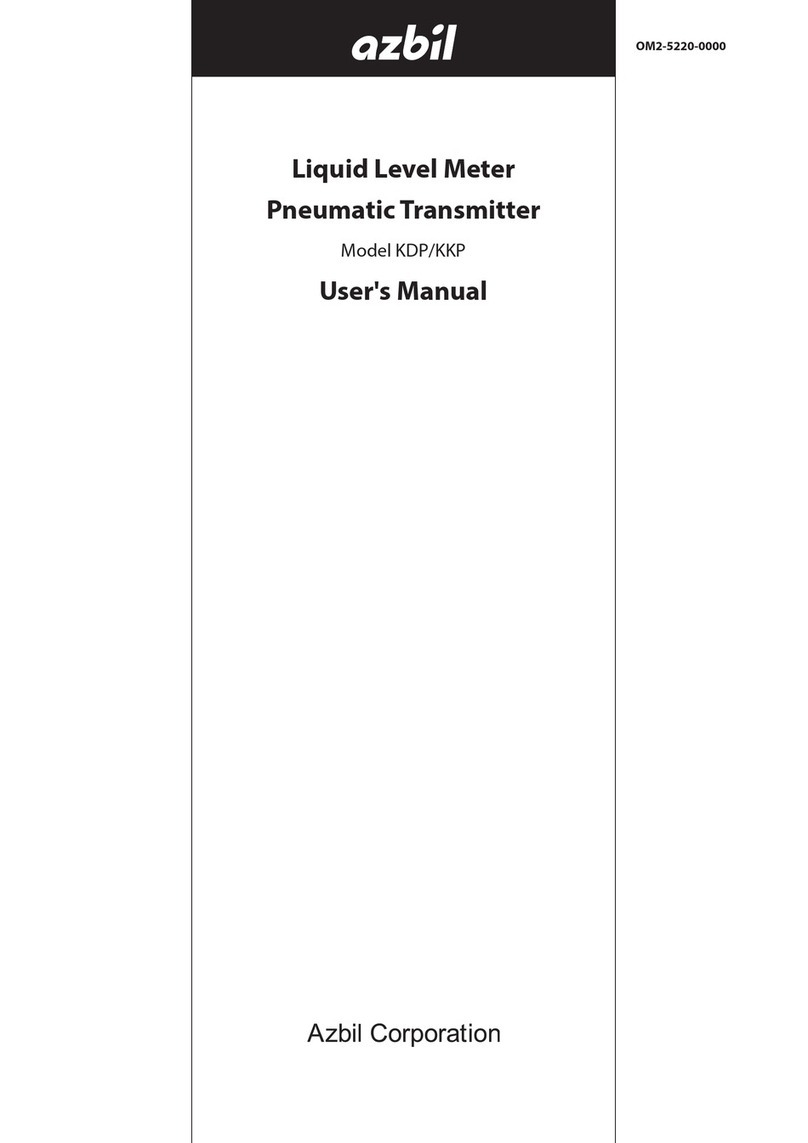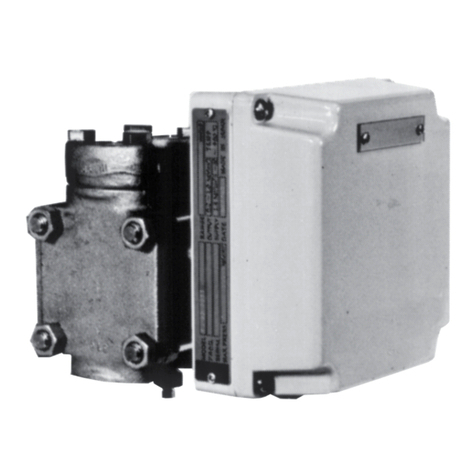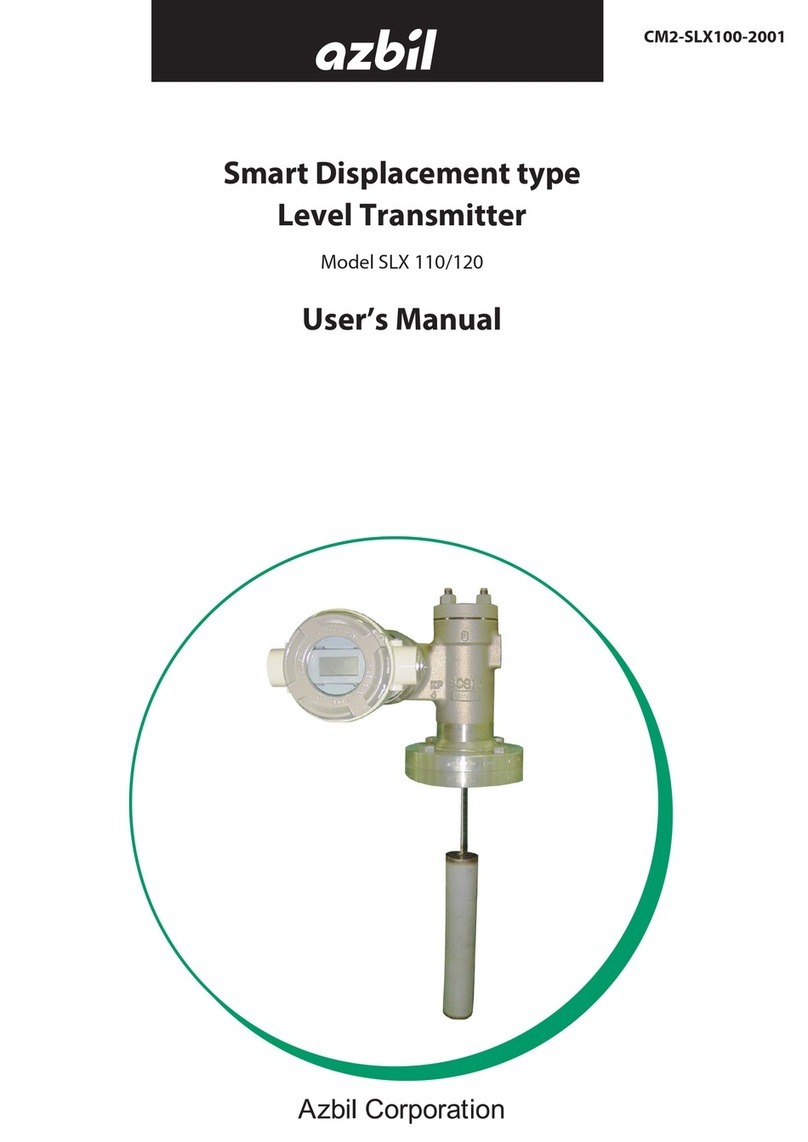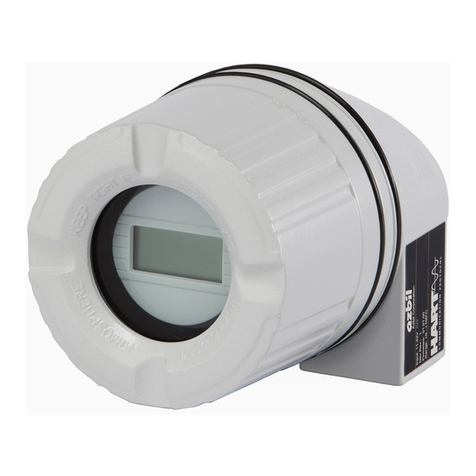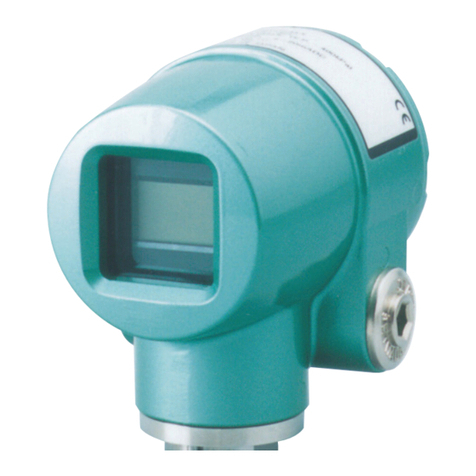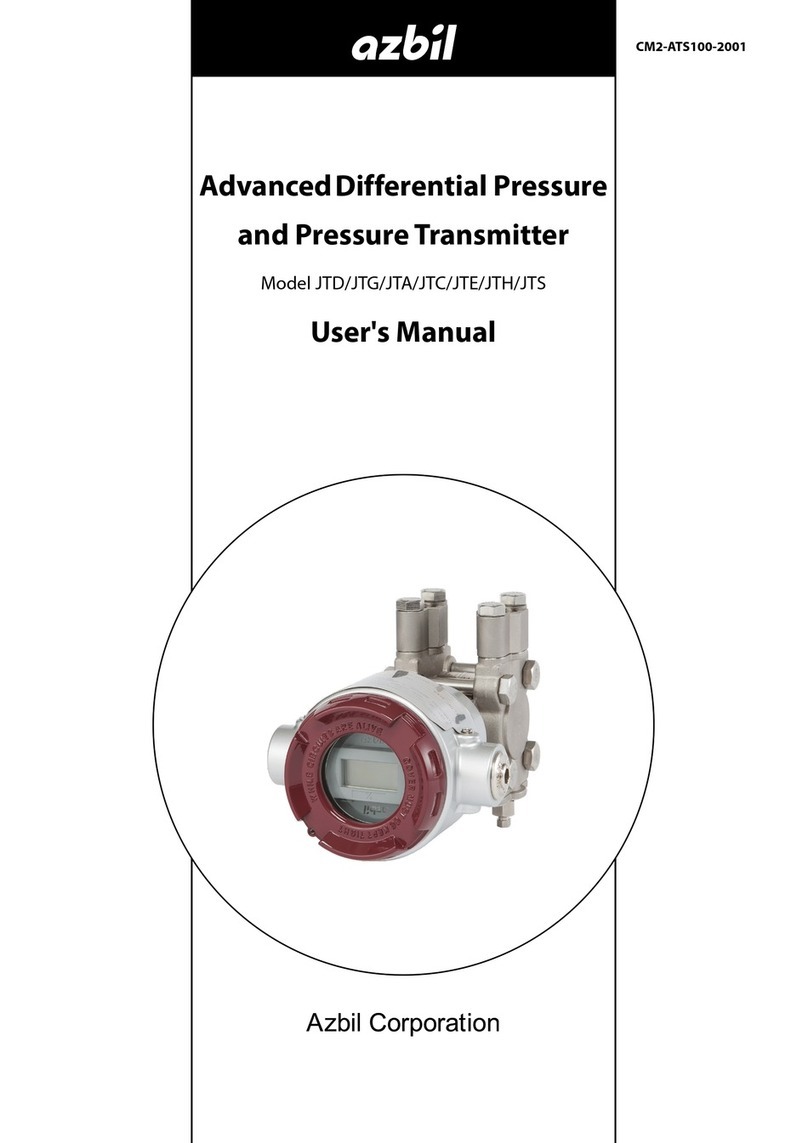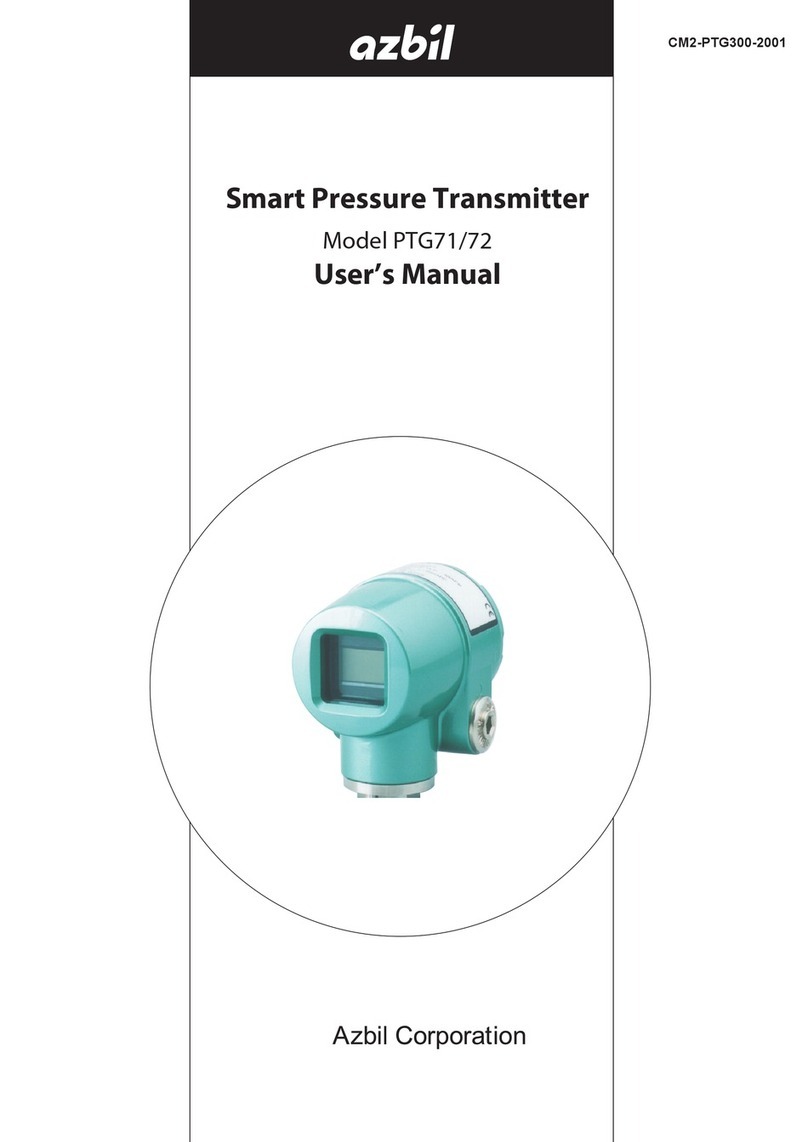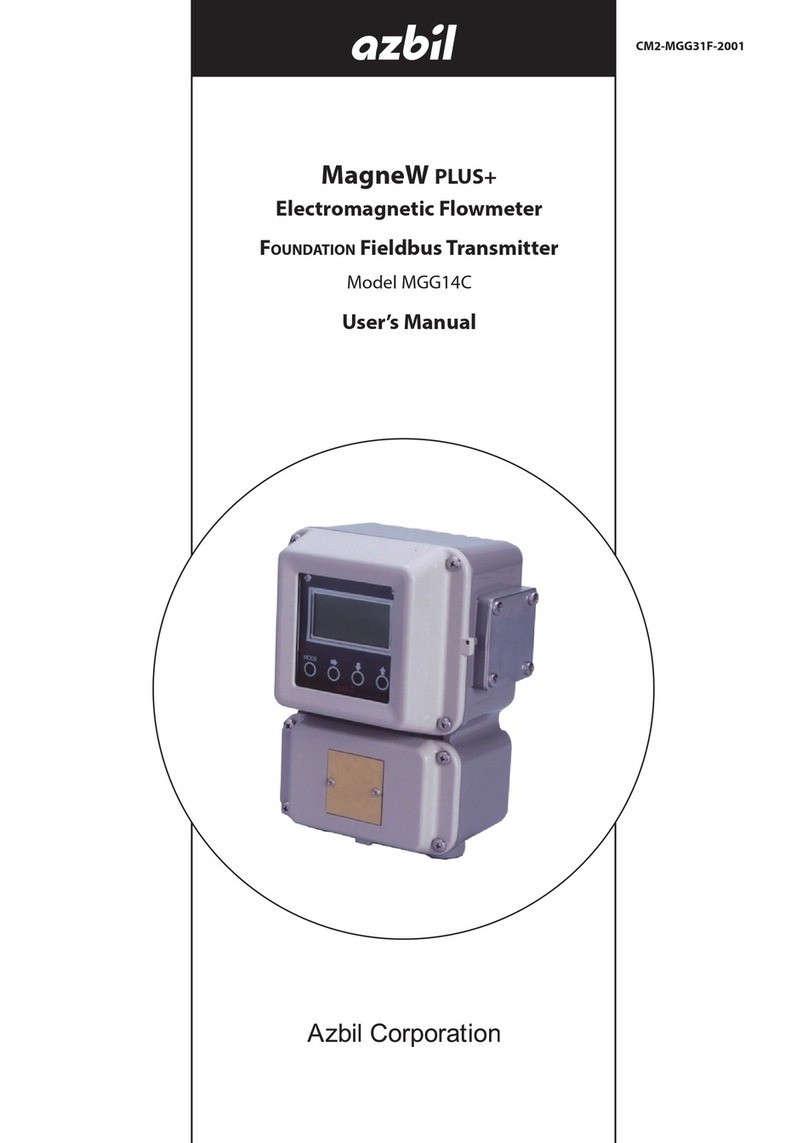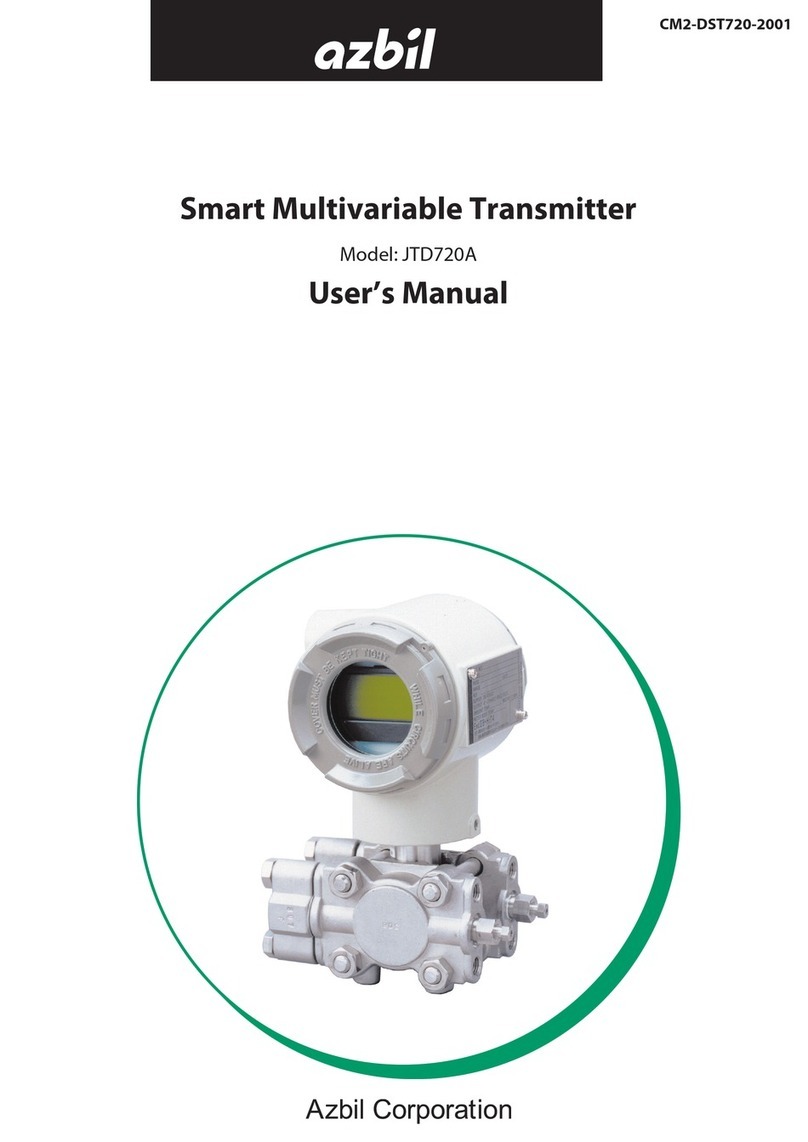
iii
Wiring Precautions
WARNING
Do not perform wiring work with wet hands. Doing so may cause an electric shock.
Before starting wiring work, be sure to dry your hands or use appropriate gloves, and turn off the
power. Failure to do so may cause an electric shock.
CAUTION
Perform wiring work correctly while carefully checking the specifications. Incorrect wiring may damage
the device or cause a malfunction.
Apply power correctly according to the specifications. If the power input is not according to
specifications, the device may be damaged.
Maintenance Precautions
WARNING
If signs of corrosion are found on a pressure-resistant part such as a bolt, nut, or flange, replace the
affected part with a new one. Otherwise, the part's performance may be compromised, resulting in a
dangerous situation. A damaged part may cause a cut or other injury.
CAUTION
When moving the probe up or down, move it slowly while carefully checking the surroundings, and
bundle and secure excess cabling. Failure to do so may cause cables to be caught, or objects to be
measured may be knocked out of position.
When work is performed with the probe in an upright position, be sure to secure it firmly. Failure to
do so may cause a personal injury or damage to the product.
Replace a damaged seal gasket or O-ring with a new one. If this product is operated with a damaged
seal, it may malfunction.
Do not attempt to modify or disassemble this product in any way that is not described in this manual.
Doing so may cause an electric shock or a malfunction.
When this product is no longer needed, dispose of it appropriately as industrial waste in accordance
with the applicable local regulations. Additionally, do not reuse a part or all of this product.
Do not open the case of the junction box in strong wind or rain. Water entering the junction box can
cause a malfunction.
Do not use SFN communication when the process measured by the liquid level transmitter is under
automatic control. Doing so may cause the output to vary, resulting in hazardous operation.
